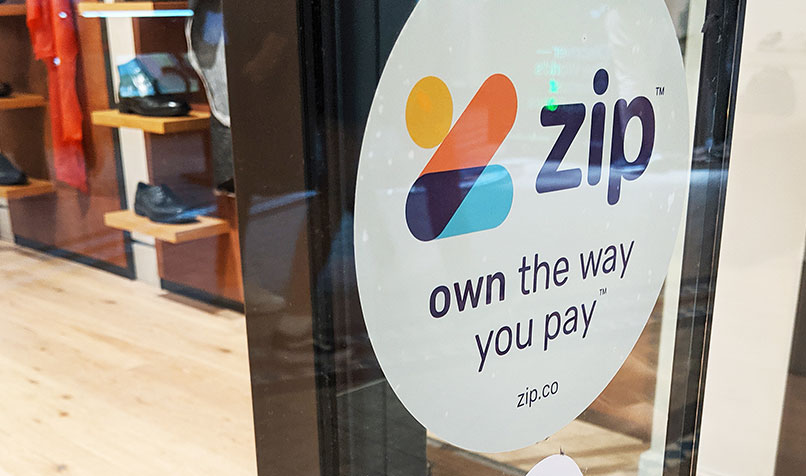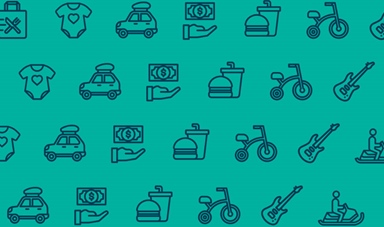Loading component...
At a glance
- Afterpay’s business model is centred on the importance of consumer protection.
- A Roy Morgan report says Australians under the age of 35 make up almost 56 per cent of BNPL users, and those over 50 make up just 14.2 per cent.
- Credit card debt today is down to A$7 billion from A$8 billion in 2007, says the Roy Morgan report.
For the BNPL industry, the past year can be likened to a wild rollercoaster ride, and no one has felt the highs and the lows as sharply as market leader Afterpay Holdings Ltd. (Afterpay).
Three years from its listing in May 2016, the future looked bright for Afterpay. Its stock was trading at A$25.7, and its market capitalisation had risen from A$165 million to just over A$6 billion.
Then, in June 2019, when Visa announced it was entering the instalment payment solutions arena, some began to predict the death of Afterpay and other fast-growing but still young BNPL brands. That day, the value of Afterpay stock dropped 15 per cent in 30 minutes, and far worse was yet to come.
During the COVID-19 market panic in mid-March 2020, in a single session, Afterpay lost A$1.47 billion of market value, or 33 per cent, amid fears of bad debt exposure caused by job losses and widespread economic downturns. Having traded at over A$40 in mid-February, shares were languishing at less than A$9 in March.
The share price then soared back to almost A$40 in May, when Chinese tech giant Tencent Holdings Ltd, owner of communications social media and payment system WeChat, purchased a A$300 million stake in Afterpay.
An insides's perspective
When she was first approached by Afterpay to take a leadership role, Christine Blyth CPA was the CFO of a global professional services consultancy. Initially, she thought the BNPL business was a payday lender, and was not overly enamoured with joining. Then she did some research.

What Blyth discovered, she says, was completely different to what she thought the industry was all about.
“It wasn’t until I did a little bit of digging that I realised this company was nothing like what I thought it was, having read a few media articles,” she says. “I looked at the consumer protections, and there are just so many of them.”
In fact, she says, Afterpay’s entire business model has been built keeping in mind the importance of consumer protection.
“We make money off the merchants,” explains Blyth, who is now Afterpay’s global head of transformation. Afterpay charges a commission on sales from merchants in return for managing the payment system. “If you go to Myer and buy a pair of pants and you default on that payment, we freeze you from being able to further use the platform. We still have to pay Myer for your pants, but we get no money from you, and we don’t report you to any third-party credit bureaus.
“If a customer can’t pay the bill, we lose the 3 per cent or 4 per cent we would have made from the sale. We still have to pay the merchant, plus we lose a customer.
“Clearly, the entire business model is built around getting customers paying on time and making sure the right customers are using our product.”
Compare that to the credit card model, which, like it or not, relies on customers being permanently in debt. If credit card customers pay off their debt in full, the business makes no revenue. That industry requires heavy regulation around consumer protections, because it benefits partly from customers being in debt, as well as revenue from merchant fees.
Many have argued that BNPL operators should face similarly stringent oversight.
Up until now, the industry has not had to face such regulation, even after a Senate hearing into the industry in early 2019.
“The industry is listening and responding as the regulatory landscape evolves,” says Diane Tate, CEO of the Australian Finance Industry Association (AFIA), which represents more than 100 providers of consumer, commercial and wholesale finance, and which has developed its own code of practice.
“In AFIA’s BNPL Code of Practice, there are many instances where the standards go above and beyond the law.”
A model of financial disruption
According to a November 2018 report from the Australian Securities and Investments Commission (ASIC), titled Review of Buy Now Pay Later Arrangements, the number of consumers who used at least one BNPL arrangement increased from 400,000 in 2015-2016 to more than two million in 2017-2018.
Today, according to AFIA, approximately 30 per cent of Australian adults, or about 5.8 million customers, are using BNPL services. Up to 10 per cent of all online sales now go through a BNPL provider.
A Roy Morgan report says Australians under the age of 35 make up almost 56 per cent of BNPL users, and those over 50 make up just 14.2 per cent.
According to the Reserve Bank of Australia (RBA), in the 12 months to January 2019, the number of Australian credit and charge card accounts dropped from 16.71 million to 15.89 million. Credit card debt today, the Roy Morgan report says, is down to A$7 billion from A$8 billion in 2007.
Significantly, 86 per cent of BNPL users from the past 12 months plan to use a BNPL arrangement again, according to ASIC. On the downside, however, “buy now, pay later arrangements can create some risks for consumers if they take on debt that they may have difficulty paying back”, the ASIC report says.
In the wrong hands, of course, any service that results in any debt can be a negative. Gerard Brody, CEO of the Consumer Action Law Centre (CALC), says that while the BNPL industry has grown substantially over the past 12 months, consumer protections have not.
He says those who contact CALC’s national debt helpline often have BNPL debt on top of several other debts such as credit cards, personal loans, payday loans and utility debts.
“There is no logical reason that people would not benefit from the protections that apply for other types of loans,” Brody says. “I’m not saying these loans shouldn’t be available.
People should have choices and, for many people, they work really well. But the providers should be required to abide by the same standards as other lenders.”
The number of consumers who used at least one BNPL arrangement increased from 400,000 in 2015-2016 to more than two million in 2017-2018.
Brody has also seen cases of people prioritising payments to BNPL providers over payments to providers of essentials such as rent, electricity and water. They do this, he says, because they fear being kicked off the BNPL platform.
Dr Paul Harrison, Deakin University’s director of the Centre for Employee and Consumer Wellbeing, says the industry is still under consideration for stricter regulation. Indeed, ASIC declined to be interviewed for this story, saying “… we are still looking into the BNPL sector and hope to have more to say about it in the coming two to three months”.
However, if there is regulation of the industry, it shouldn’t be assumed that current legislation for credit providers would do the job, Harrison says.
“There’s a bit of confusion about how to approach this,” says Harrison, who gave advice during the Senate hearing. “People ask, ‘How do we change current credit legislation to account for BNPL?’ Instead, we need to think about it differently. We need to start with the effects of this type of product on consumers, particularly vulnerable consumers, and work back from there to figure out whether, and how, we need to regulate it.”
Interestingly, Tate agrees. “The current regulation of financial services and technology is becoming increasingly complex,” she says. “We need the right regulatory settings to properly regulate the different fintech product and service offerings. A one-size-fits-all approach is increasingly not appropriate in traditional financial services, let alone tech products and services.”
Protecting the customer
BNPL operators emphasise the efforts they put into protecting customers and preventing them from becoming over-committed.
- All code-compliant members (signatories) are required to be a member of the Australian Financial Complaints Authority.
- BNPL products are not offered to people under 18.
- The assessment of product suitability for customers is upfront and ongoing.
- If a customer misses a payment, they are restricted from further use until they make the repayment.
- Consumer safeguards to assist vulnerable consumers – including providing hardship assistance to customers and never initiating bankruptcy proceedings against customers.
Continuous innovation

For BNPL players, innovation is crucial in ensuring that they, the disruptors, don’t become the disrupted.
As they go about their business under the watchful eye of corporate regulators, the BNPL businesses that so successfully disrupted the decades-old credit card industry are now innovating at a rampant pace to ensure that they in turn are not disrupted.
Most of the major players have carved out their own unique spaces.
For example, Afterpay works by offering fortnightly repayments over six to eight weeks to pay off a purchase, interest free. Zip Pay has no fixed term, instead taking a monthly repayment on the interest-free loan account. Openpay offers a choice of three repayment options over a term of two to 36 months. Certegy brings to the table continuing credit contracts with terms of two to 60 months.
Retailers typically now offer two or three choices of BNPL providers to suit the needs of different customers.
Some BNPL operators charge the consumer fees, and others do not. Most operators allow customers to repay early, and some are making the leap into entirely new offerings.
At Zip Pay, for instance, different types of solutions are offered in different territories. The business runs a real-time credit and ID check on every customer, resulting in “bad debts well below comparable credit card companies, well below 2 per cent”, says Tommy Mermelshtayn, Zip Pay’s chief strategy officer.
“We’re very much of the opinion that unless you continue to innovate, and unless you continue to deliver real value, customers will jump to new players in the market. In the payments landscape, one of the fastest-growing and hottest segments in the market, there’s been a lot of capital investment.
“To that extent, we just launched a virtual card solution that enables our customers to shop anywhere online. We generate a one-off card they can use to make a purchase. That was a pretty massive business development on our side. It was a big investment and [was] in response to customer feedback.”
Like many of the BNPL players, Zip Pay is also fast becoming an international brand, seeking growth in other territories, including the UK, after perfecting its art at home.
Having begun as a lean start-up in Australia, Zip Pay now boasts big-hitter executives, including chief customer officer Steve Brennen, previously with Uber, and chief commercial officer Hamish Moline, previously with Visa. The brand also accepted a A$40 million equity investment from Westpac Group in 2017.
Having joined Afterpay after her initial moment of doubt, Blyth has enjoyed what she says are the most satisfying and thrilling 15 months of her career. Her main concern is with newcomers to the industry who could give it a bad reputation.
“We’re working hand-in-hand with the regulators, because this is a new industry,” she says. “We know we have an amazing industry, and we want to keep it that way. We have very happy customers; Afterpay has the highest net promoter score of any digital payment solution in Australia.
“Our merchants are thrilled with the increases in basket sizes and frequencies of purchase. The app is now one of the biggest channels for merchants to get a pipeline of customers. Users, merchants and our business now have a wonderful, symbiotic relationship.
“There is so much passion and energy in this industry, and so much great leadership. We are all very excited about the potential and the human-centred change we are able to create.”

